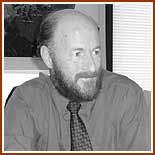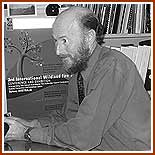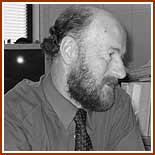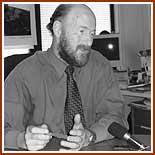 |
|
 "The 1939 fires covered a large area of the state and it was a turning point for how fire-fighting was organised in Victoria."  "The 1939 Royal Commission delivered visionary recommendations, resulting in the formation of the CFA and the fire legislation we have today."  "In 1939 the people were living and working in the forest with probably less understanding of fire behaviour and fire knowledge than we have now."  "The 2003 fires were lit by lightning; in í39 they were lit by a community whose cultural relationship with the fire was uninformed."  "This season, I donít think anybody wants to be in the chair of responsibility, but it falls to me, so you have to take it, but a number of times you go home and you think, 'Crikey, itís been a terrible day'." |
Gary Morgan Chief Fire Officer for the Department of Sustainability and the Environment  This season that weíve just had, in 2002-2003, was expected to be really dry. We were expecting lots of fires. And the fires occurred particularly in the far north-east, rather than around the central part of Melbourne, Healesville, Warburton, Neerim South area. Thatís where it had a big impact in 1939, and a lot of the communities that were living and working in the forest were completely burnt out. In the 1939 fire season, the run went over a shorter period that the 2002-2003 period, but burned a larger area. They did have a large number of fires burning in the forests at that time, ďlit by the hand of manĒ, you know. That was Judge Leonard Strettonís famous saying from the Royal Commission into the 1939 bushfires, and it was true. The difference between the 1939 bushfires and this seasonís bushfires was that lightning started this seasonís bushfires, and the bushfires werenít just here in Victoria. They went from up near the ACT through New South Wales and down to Victoria, coming out near Wilsonís Prom. The fires also went down to Flinders Island and started fires down there so the 2002-2003 bushfire season involved Tasmania, Victoria, NSW and ACT, all impacted and burning at the same time. So thatís the big thing that sticks out in my mind from Judge Leonard Strettonís report, that the fires in 1939 were lit by the hand of man. The fires in 2003 were lit by lightning; in 1939 they were lit by a community whose cultural relationship with fire was uninformed. Their attitude to fire was that fire was all good and couldnít bring about bad outcomes. There is good and there is bad fire. People need to know that and right now we are in various parts of the state, lighting fires right now to do fuel reduction burns which reduces the fuel hazard in the forests. There is also high-intensity regeneration burning, after falling for logs, to create the regeneration.  So we have very stringent ways of doing fuel reduction burning, to maintain fire-fighting safety, to keep it within the contained area and ensure that the fire doesnít get out of control. So we have very stringent ways of doing fuel reduction burning, to maintain fire-fighting safety, to keep it within the contained area and ensure that the fire doesnít get out of control.There is no fire agency in the world that has got sufficient resources. So can you stop a 1939? I believe you can stop the impacts, but you will always have large sweeping fires in the environment. I believe thatís part of the natural ecosystem, and while we can minimise the impact, which we have done and very successfully, weíre always going to get a period when youíve got the weather conditions that match, multiple fires burning and other potential risk areas that are distracting you and then you end up with a large fire rolling - and it will always be the case. During the 1939 fires you also had South Australia being affected and the SA fires coming across into Victoriaís south-west. We were expecting a significant bushfire season this season, but my level of concern was slightly less than it was Ď97-98. However the size and ferocity of this seasonís bushfires proved how wrong you can be. The 1939 fires covered such a large area of Victoria and they became a turning point on how fire-fighting was and is organised in Victoria. The fact that there was a Royal Commission straight after the 1939 fires that delivered quite visionary recommendations on how Victoria should be organising and structuring fire-fighting makes this event significant. These recommendations resulted in the formation of the Country Fire Authority and the fire legislation that enables us to fight fires in Victoria the way we do. These recommendations have stood the test of time, and been held in high regard, not just in Victoria, but in Australia and around the world. In my discussions with people globally, they comment on our strong, sound fire legislation and very good cooperation between the agencies. Our current fire legislation was a result of the recommendations that came out of the 1939 Royal Commission into the fires. You also have got to look at how affluent we are now in comparison to people back in 1939. You have to look at the differences in the standards of living and where people actually lived. In 1939 people were living and working in the forest, with little infrastructure to support them and probably less understanding of fire behaviour and fire knowledge than we currently have now.  Some of the old timers mightnít like us saying this but the reality is, every generation learns by the previous generations, so the next generation from us should have better knowledge than we have based on what they receive in schools and whatís been documented. Some of the old timers mightnít like us saying this but the reality is, every generation learns by the previous generations, so the next generation from us should have better knowledge than we have based on what they receive in schools and whatís been documented.It would also be fair to say that the better technology we have to detect where fires are, to know where they are spreading to and when theyíre going to be there, is significantly different to the approach the local brigades took in 1939. They simply did not have access to that kind of sophisticated technology in the practice of fighting fires. Now, even people not involved in fire-fighting have a better knowledge about what to do in a fire and have more tools available to help suppress a fire. So thereís a few things that are different: thereís community engagement and awareness, thereís the fire-fighting tools that we have, not only our trucks, but compare the rake and hose, the hand tools that we use now to what they had in 1939 Ė they just had to grab a branch from a tree and beat the fire out with that. And there is no doubt that the use of radios to get the information to people living in remote regional areas has made a huge difference - radio as a medium has given a high level of involvement, information and preparedness to people living in remote areas of regional Victoria. But there are direct parallels between 1939 and 2003. The parallels between 1939 and now is that the community would have gone through a grieving stage like we always do after a big bushfire season that threatened lives and property. And if the community has been actively involved, they will be grieving immediately after the fire and itís in that grieving state when people start to apportion blame.  This apportioning of blame is occurring now after this 2002-2003 bushfire season in the same way it did after the 1939 fires. The fire-fighting agencies do everything in their power to stop fires like this seasonís bushfires, and part of my role is to make sure that I can do everything to help the community and ensure they are prepared. This apportioning of blame is occurring now after this 2002-2003 bushfire season in the same way it did after the 1939 fires. The fire-fighting agencies do everything in their power to stop fires like this seasonís bushfires, and part of my role is to make sure that I can do everything to help the community and ensure they are prepared.Because itís not just fire-fighters, but members of the community that are going to be battling these blazes and getting in and working together - that was a big win I believe out of these fires, that we were able to work together with the community. This season, I donít think anybody really wants to be in the chair of responsibility, but it falls to me, so you have to accept that responsibility, but a number of times you go home and you think, ďCrikey, itís been a terrible day todayĒ. Probably the worst day was day 50, when we had the plane go down and then the fire-fighters in the creek after the flash flood and the unfortunate tragedy of Cheryl dying. That was a horrific day. Working in the country for so long, you tend to know a lot of fire-fighters, and thatís not just from our organisation, but from the CFA, Parks Victoria, DSE and DPI people, you know a lot of people, and you donít want to see any of them get hurt. In addition to that, from working in the country, you know the impact fire has on the people on the fringes of the forests and parks, you donít want to see them impacted on and yeah it is, itís really personal. Read more about Judge Strettonís findings in 1939 in the Royal Commission section |
The FireFighters
Len Foster
Chairman and CEO of the Australasian Fire Authorities Council Gary Morgan Chief Fire Officer for the Department of Sustainability and the Environment Russell Rees CFA Chief Officer Allan Marks CFA Group Officer for the Dandenong Ranges Fire Brigade Group Greg Head CFA Captain of the fire brigade in Warburton John Rigby Coordinating chaplain for the Country Fire Authority Mike Leonard Manager of Strategic Planning - Fire Management, at the Department of Sustainability and Environment John Masterton Burns surgeon. Head of the Burns Unit at the Alfred Hospital from 1967 - 1996. |
 |